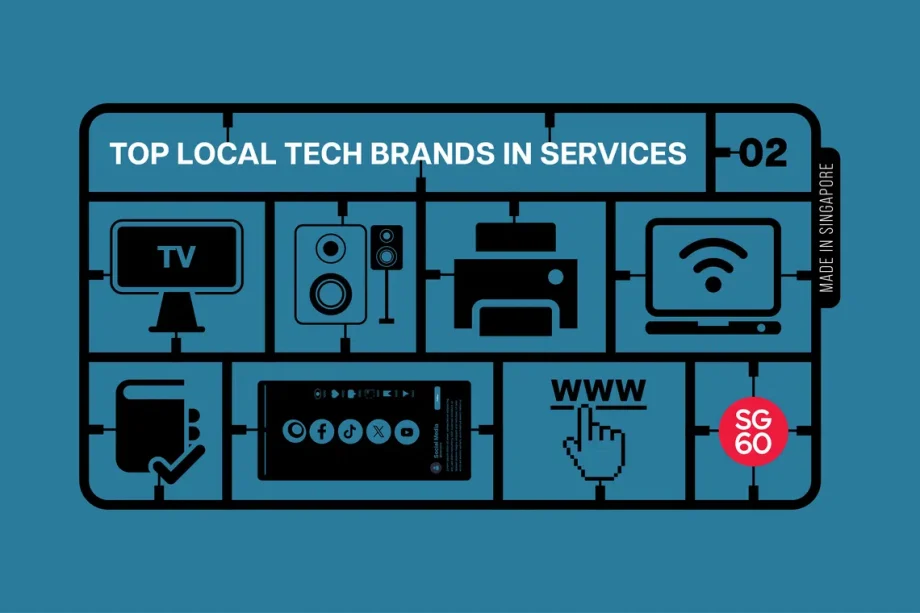HardwareZone celebrates Singapore’s 60th birthday with a series of articles showcasing local tech brands that have helped build our nation and put us on the world stage. Some of these brands have become household names, while others lesser known but no less innovative. You might even be surprised to learn of some popular technologies that got its start right here in Singapore.
(This article is one of 7 parts in our SG60 Tech Special series.)
In this article, we look at technology platforms home-grown in Singapore, which didn’t just digitise existing services, but ended up creating entirely new habits, expectations, and lifestyles that would have been unimaginable just a short decade ago. The companies profiled in this report share a common DNA, despite their diverse fields. They were all founded by visionaries who identified a specific, real-world problem, whether from unsafe taxi rides or commoditising next-day delivery for the masses, while leveraging technology to solve it.
The collective success of these technology companies is a validation of Singapore’s strategic vision and consistent investment in digital infrastructure, talent development, and an innovation-lead ecosystem.
1. Grab

A lady entering a Grab private-hire car at Our Tampines Hub on 20 Nov 2018.
Photo: The Straits Times
Founded by Harvard Business School classmates Anthony Tan and Tan Hooi Ling with just US$25,000 in 2012, Grab evolved from MyTeksi taxi-booking service to Southeast Asia’s first super-app, fundamentally changing how 187 million Southeast Asians navigate daily life. Before Grab, Singaporeans had to endure crazy taxi queues at the CBD during peak hours, with rides even harder to get if it was raining. Yes, one could try calling the taxi hotlines to secure a ride, but during peak hours, you were not the only one clogging up the phone lines. Today, the phrase “just Grab lah” has entered Singlish vocabulary, with at least 41% of the Singapore population hailing rides and ordering food with the app on the regular.
This shift in behaviour extends beyond just getting a ride. When was the last time you hailed a cab while on the street? Cashless payments at hawker stalls are now normal (in fact, I barely have any actual cash on me for most of the week), while a widespread dependency on food delivery that has made the old “dabao” (takeaway) walk a thing of the past. For better or for worse, the days of the taxi uncle not knowing the way to a particular destination are also gone, replaced by the certainty of GPS navigation.
Today, Grab is now a Bonafide ecosystem, offering services from food delivery (GrabFood) and courier services (GrabExpress) to digital payments (GrabPay) and digital banking (GrabFin).
Key Events:
- 2015: Launched GrabExpress, its courier service, signalling the beginning of its diversification beyond ride-hailing.
- 2017: Launched GrabPay, a mobile payment system, laying the groundwork for its financial services arm.
- 2018: Acquired rival Uber’s Southeast Asia business, a defining moment that consolidated its market leadership and accelerated its superapp strategy.
- December 2021: Made its public debut on Nasdaq following a record-breaking SPAC merger, raising a total of US$4.5 billion and putting Southeast Asia on the global financial map.
- May 2022: Acquired digital banking licenses and launched its digital bank, GrabFin, in Singapore, Malaysia, and Indonesia, furthering its push into financial empowerment.
- May 2025: Launches first Artificial Intelligence Centre of Excellence with Support from Digital Industry Singapore
- July 2025: Pilots autonomous shuttle bus in Singapore, serving Grab employees between Grab’s one-north headquarters and the one-north MRT station.
2. Carousell

Marcus Tan, co-founder, Carousell.
Photo: Carousell



![ShopBack co-founders Henry Chan (left) and Joel Leong at Timbre One North, on June 30, 2022. In 2014, they started ShopBack with four other Zalora alumni. [Lunch With Sumiko]](https://cassette.sphdigital.com.sg/image/hardwarezone/51fd02d7957cc8f17118c4dc0bd0c2e4938e5cf2a202bfbf7d44b12b3a7ec9e5?w=1000&q=85)





